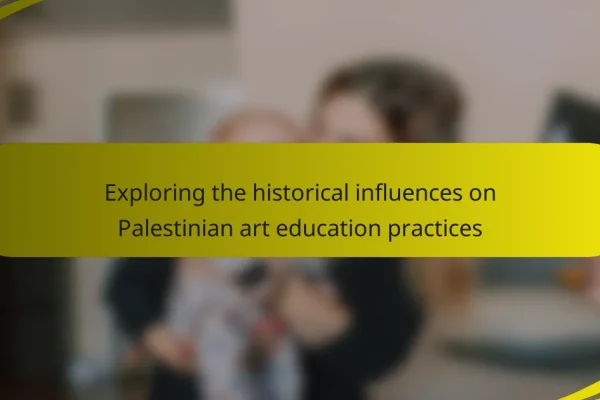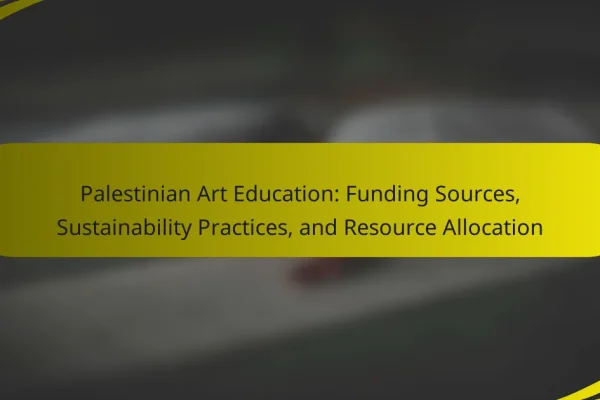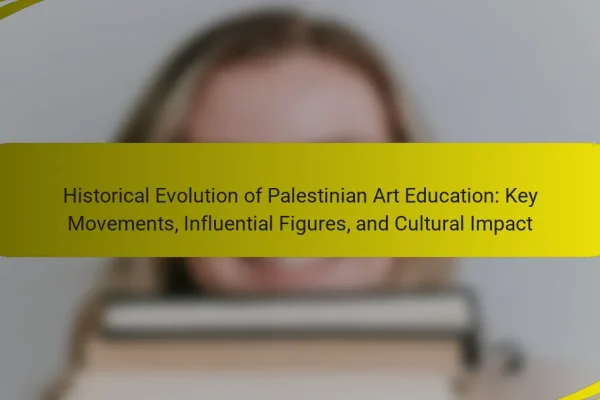
Exploring the historical influences on Palestinian art education practices
Palestinian art education practices have been shaped by a complex interplay of historical events and socio-political factors. The introduction of formal art education during the Ottoman Empire, followed by the British Mandate’s promotion of Western styles, laid the foundation for contemporary practices. The 1948 Nakba disrupted traditional education, leading to a focus on identity and…

